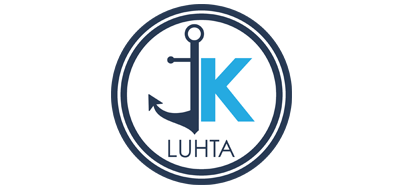The United States Coast Guard published a Notice for Proposed Rule Making in August, 2011 requesting public comment on, among other things, proposed regulations which will require implementation of Safety Management Systems (SMS) aboard towing vessels. For towing vessels these systems will be known as Towing Safety Management Systems (TSMS).
The Towing Safety Advisory Committee (TSAC) convened a working group in September to discuss the proposed regulations and to form a coherent response to the public comment request. The TSAC was established under the authority of Title 33, United States Code, Section 1231a, when the Secretary of the Department of Transportation, through the Commandant of the Coast Guard, delegated the responsibility to the Chief, Office of Marine Safety, Security and Environmental Protection. Given its origins, the TSAC recommendations are naturally given great consideration by the Coast Guard when forming new regulations. TSAC is purported as being a body including “members from the barge and towing industry; the mineral and oil supply vessel industry; port districts, authorities or terminal operators; maritime labor; shippers and the general public.” While technically this statement is true, the body tends to be dominated by vessel owners and operators.
The TSAC to date has not filed its comments on the implementation of a Safety Management System (SMS) aboard towing vessels. It is clear from having attended the most recent meeting of the working group that the towing industry is about to learn some difficult lessons. While there is no doubt that Safety Management Systems lead to improvement of safety and operations aboard vessels, there are a number of concerns related to the implementation of such a system aboard towing vessels.
The primary concern is the practical implementation of the TSMS aboard vessels. Although towing vessels often vary in types of service, generally the manning aboard towing vessels is limited. Often times there are two deck officers aboard these vessels, sometimes a dedicated engineer, and perhaps two or three unlicensed deck workers. The deck officers typically alternate watches on a six hour basis. This means one Mate will stand a six hour watch and then have a rest period for six hours. This is a grueling schedule for any worker. Talk to any towing vessel officer and they will tell you as much. After thirty days of six on, six off, the body is simply exhausted because the individual never receives an uninterrupted rest period of more than a few hours. When off watch for six hours, the officer is lucky to get four hours of continuous sleep. When on watch, the officer is either navigating the vessel or loading or discharging cargo. Much of this work is done under conditions of continuous fatigue. This is the norm aboard towing vessels.
The addition of the responsibility of maintaining a Towing Safety Management System (TSMS) to the list of responsibilities of the deck officers will create problems. Already fatigued deck officers will now be required to maintain the onerous paperwork requirements associated with a TSMS. With already inadequate rest periods, when does the vessel operator expect the officers to complete and maintain the paperwork? It is safe to assume the officers will fill out the checklists while on watch.
On a large ocean-going vessel doing paperwork on watch is not a problem because the bridge watch has the benefit of an additional dedicated lookout. It is not unexpected that the watch officer will complete paperwork while on watch. In fact, this is common practice on deep sea vessels as additional work requirements are continually thrust upon officers. Tugs do not have the luxury of an additional lookout . The watch officer both navigates the vessel and serves as lookout. With implementation of a TSMS the watch officer will now be required to look out the window to avoid traffic, navigate the vessel, and find a way to complete all the TSMS checklists in a timely fashion along with other company paperwork demands, all while already being fatigued. One result will be that the checklists are filled out simply to satisfy the requirement of having a piece of paper on file. Another outcome will be that the officers complete these checklists at the expense of maintaining an effective navigation lookout.
This TSMS is a new concept to the towing industry so it is expected that there will be some growing pains while adopting it. And in the long term its effect on operations will certainly be positive if implemented properly. However, owners and operators, through the TSAC, is not keen to consider that implementation of a TSMS will increase workload for already fatigued mariners, which may lead to increased accidents. Adding another man to the rotation would be a simple solution. Even an additional unlicensed crewmember could help facilitate increased rest periods for officers. It is unfortunate that TSAC will not consider these options since the Coast Guard gives their recommendations such deference. As a result, additional work requirements in the form of TSMS management will be forced upon the towing vessel crews without an increase in number of crew. The implementation of a TSMS is intended to increase the safety of operation of towing vessels but the practical reality is that without additional manning, these systems will make the operation of towing vessels less safe, and possibly even dangerous.
